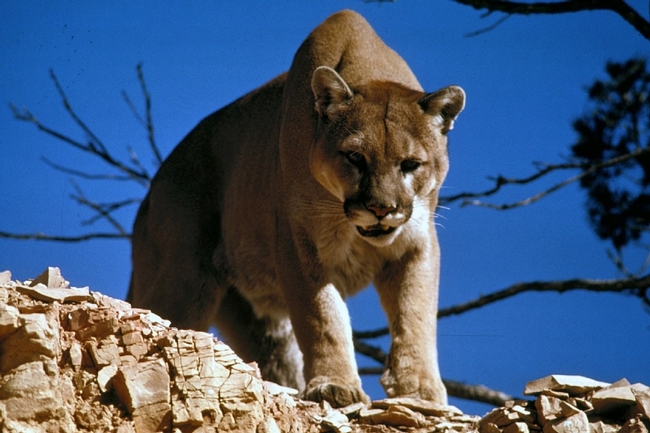
Posts Tagged: lion
I Am Honey Bee; Hear Me Roar
Honey bees have nothing on the late Helen Reddy (Oct. 25, 1941-Sept. 29, 2020), an Australian-born singer who roared like a lion: "I am woman, hear me roar." Her hit song, "I Am Woman," released in 1972, became an anthem for the women's liberation/equal rights movement back in the '70s. "I...
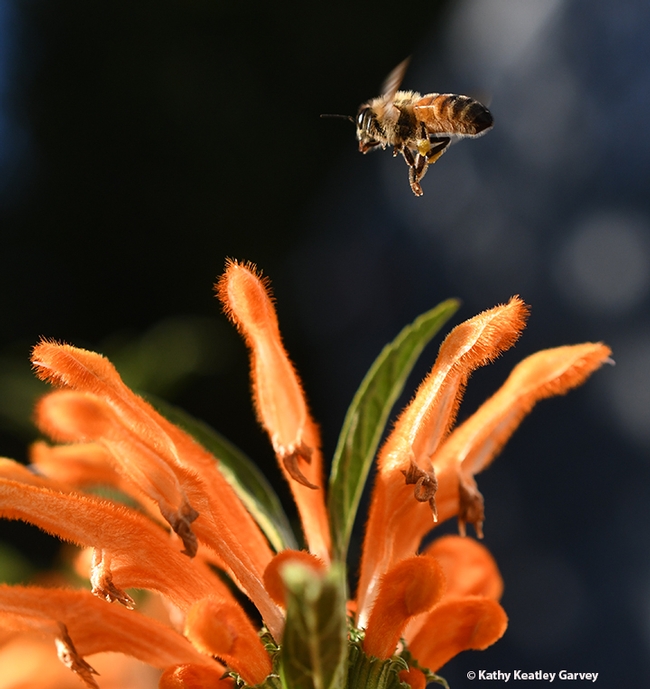
A honey bee heads for the lion's tail, Leonotis leonurus, in Vacaville, Calif. on a sunny day in December.
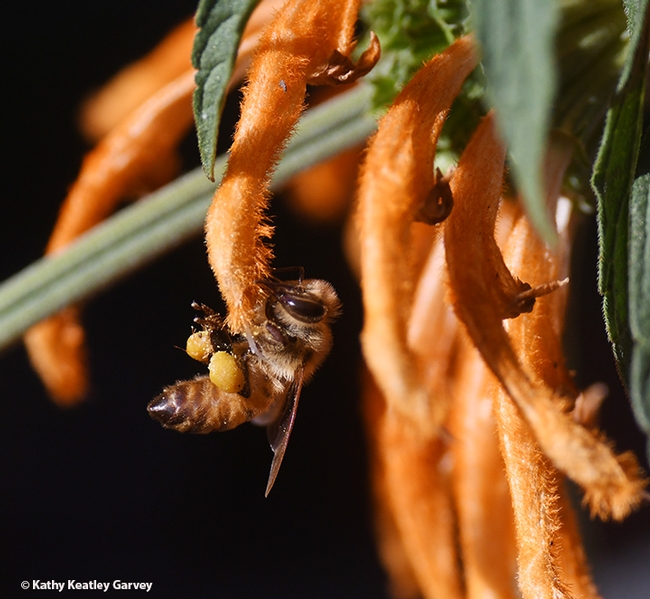
Ahh, just what this worker was looking for. The plant meets her needs and the needs of her colony. (Photo by Kathy Keatley Garvey)
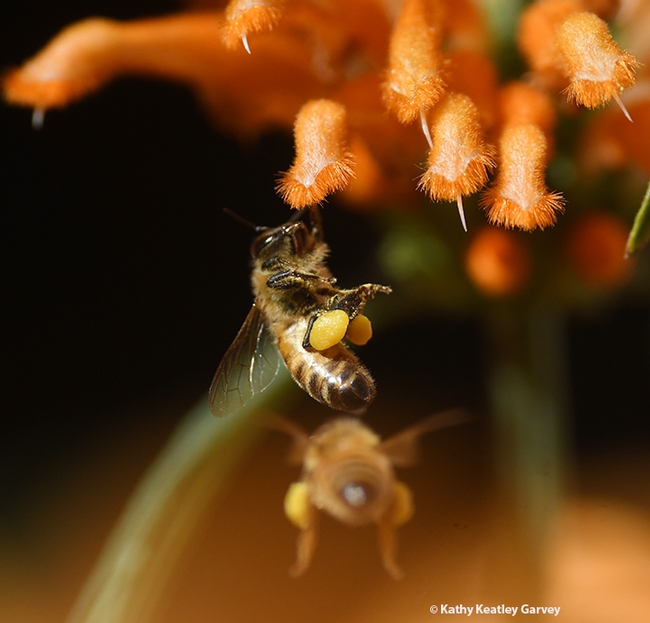
Word spreads that the lion's tail is the "place to bee." (Photo by Kathy Keatley Garvey)
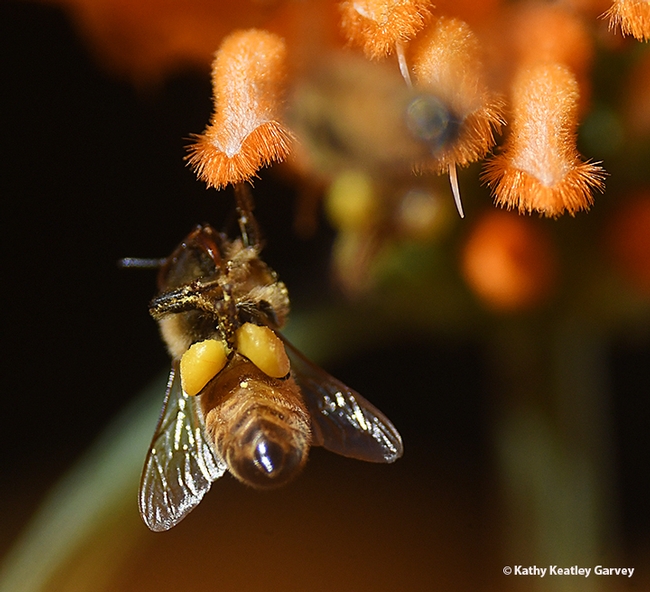
This pollen-packing honey bee is oblivious to everything but her plant, the lion's tail. (Photo by Kathy Keatley Garvey)
The Lion's Tail: The 'Mane' Event
The lady beetle, aka ladybug, scurried up the lion's tail plant, Leonotis leonurus. Up one stem and down another, she went. Apparently, she didn't find what she was looking for--aphids or other small bodied-insects--and took flight. If you haven't planted this in your...
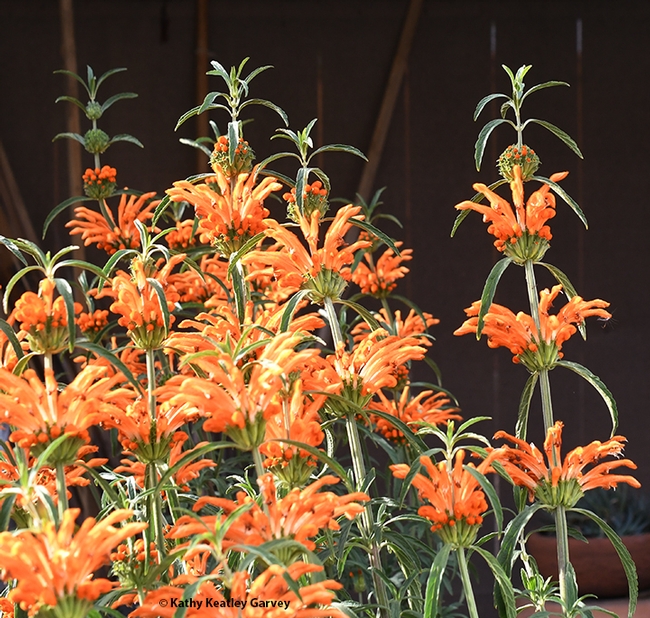
The lion's tail, Leonotis leonurus, is a native of South Africa and attracts birds, butterflies and hummingbirds. (Photo by Kathy Keatley Garvey)
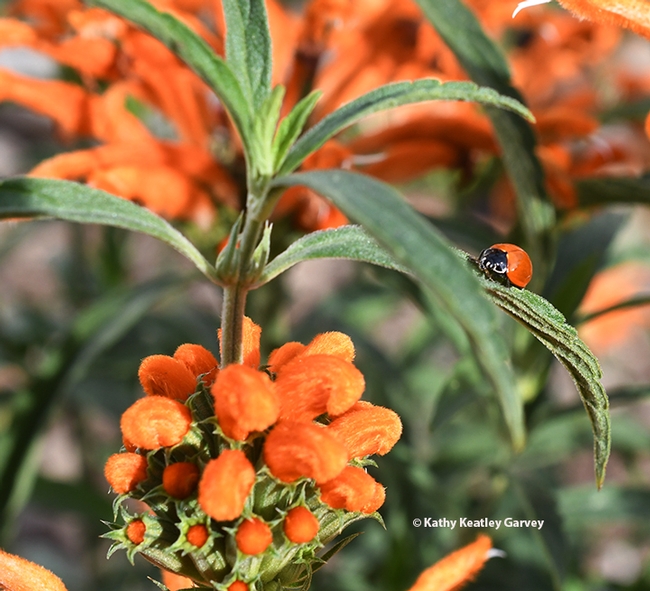
A lady beetle, aka ladybug, looks for aphids and other small bodied insects on the lion's tail. (Photo by Kathy Keatley Garvey)
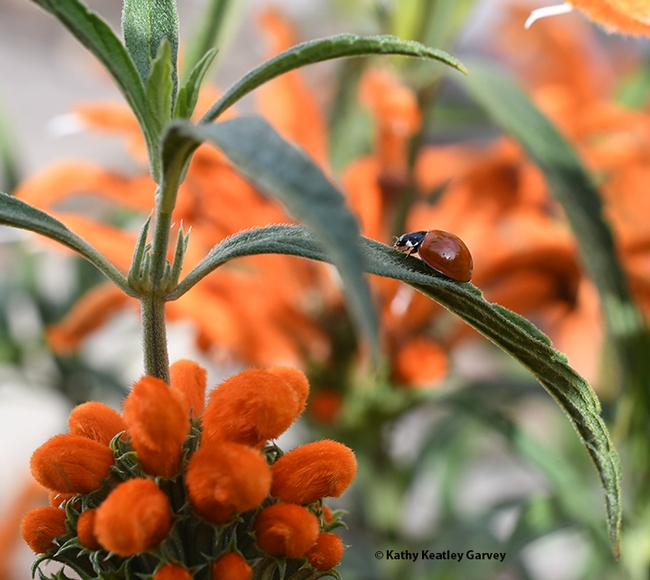
The lady beetle, aka ladybug, blends in with her environment, the spiked orange blossoms of a lion's tail. (Photo by Kathy Keatley Garvey)
Bugs Rule But Other Critters Do, Too, on UC Davis Biodiversity Museum Day
Bugs rule, but other critters do, too, on UC Davis Biodiversity Museum Day! You won't want to miss the eighth annual UC Davis Biodiversity Museum Day, set from 9 a.m. to 4 p.m., Saturday, Feb. 16. The free, family friendly event will feature 13 museums or collections. Have you ever seen a...
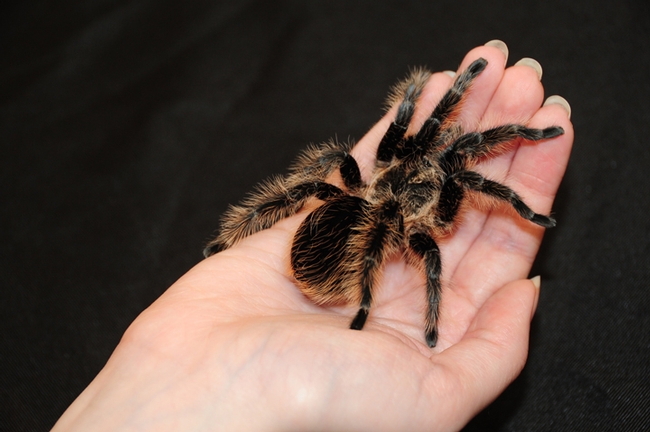
A tarantula at the Bohart Museum of Entomology. (Photo by Kathy Keatley Garvey)
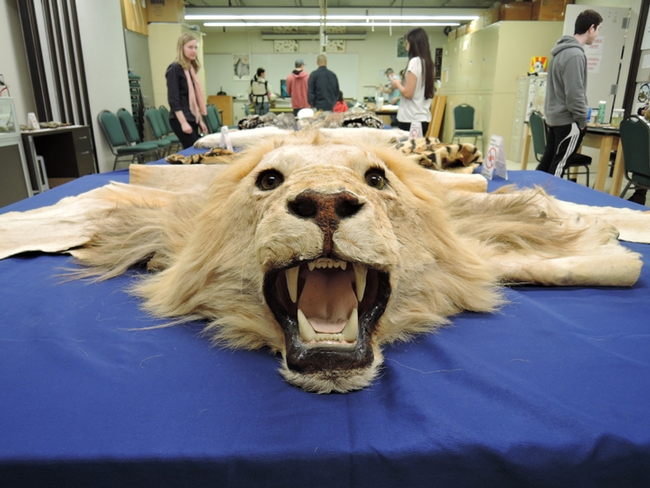
A lion specimen at the Museum of Wildlife and Fish Biology, located in Room 1394 of the Academic Surge Building. (Photo by Kathy Keatley Garvey)
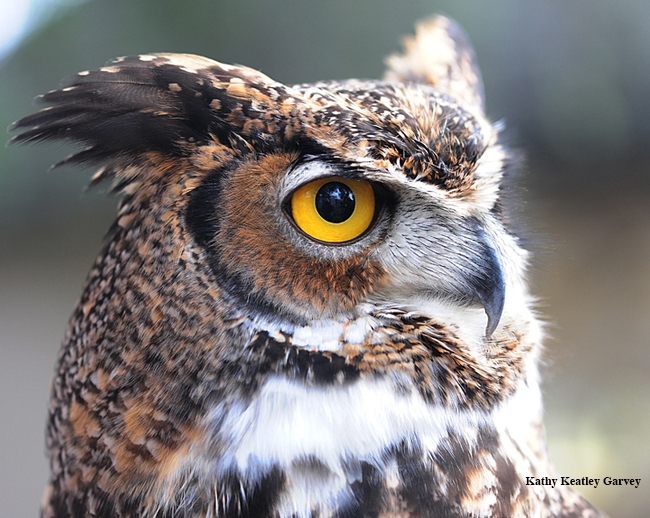
A great-horned owl at the California Raptor Center, located at 1340 Equine Lane, Davis. (Photo by Kathy Keatley Garvey)
Orange County mountain lion attack a reminder to keep livestock safe
A mountain lion entered an Orange County corral last week where nine pygmy goats belonging to members of the Trabuco Trailblazers 4-H Club were housed. Only one goat survived the encounter.
UC Cooperative Extension human-wildlife interactions advisor Niamh Quinn said she was heartbroken, but not surprised.
“We know that this is happening all over California,” Quinn said. “Sixty to 85 percent of depredation permits are issued to hobby farmers and ranchers who seek to kill wild animals that threaten their livestock.”
The loss of the goats is a sad reminder for Californians to be aware of wildlife predators in their areas and make sure that livestock enclosures are secure against them. The Mountain Lion Foundation has information for keeping livestock safe in mountain lion country, including plans for inexpensive lightweight enclosures that work well in Southern California. Quinn — along with UC Davis veterinarian Winston Vickers, UC Cooperative Extension specialist in youth science literacy Martin Smith, and the Mountain Lion Foundation — is developing a comprehensive 4-H curriculum focused on protecting both livestock and wildlife.
“This loss would have never happened if they had a properly constructed pen,” Quinn said. “The pen had holes and was held together in places with zip ties. 4-H members have to understand what predators are in their areas, how the animals can get into enclosures – whether they will dig, if they jump and how high.”
The killing of eight goats and injuries to the ninth goat by a single mountain lion may seem overly vicious, but the animal was acting according to instinct. Once inside a pen or paddock, a mountain lion will often kill until all movement stops, according to the Mountain Lion Foundation. Lions are most vulnerable to injury when taking down natural prey like deer that have lethal antlers and hooves. In a natural setting, a deer herd will run away, leaving a lion with just one catch to be concerned about. Not so for penned or fenced-in livestock.
The 4-H curriculum now being developed will empower 4-H youth to protect both predators and livestock by understanding wildlife behavior and proper animal husbandry practices. The curriculum will be available to all 4-H clubs in California – which include 27,444 youth enrolled in livestock projects – and to 4-H clubs nationwide.
In the video, a mountain lion returns to the goat pen the evening after
killing eight goats, but cannot re-enter. (Video: Winston Vickers)
The night after the Trabuco Canyon pygmy goat attack, the same mountain lion was caught on camera returning to the pen, but he was unable to enter the shored up enclosure. Vickers said the lion shouldn't cause any more problems.
“It is likely that the lion may come by the area as part of his normal territorial circulation periodically, but I would not expect further losses given the additional pen improvements that are planned, and I would not expect any greater risk to people at the location versus any other in the Santa Anas (canyons of Orange County),” Vickers said.
Vickers said he hopes that the 4-H members will not choose to kill the mountain lion responsible for the late March attack.
“The lions in their area are in serious trouble, and the loss of a single lion could affect their genetic viability for years to come,” Vickers said.
Drought is a scapegoat for wildlife in urban areas

The story said a bear recently wandered into a Little League baseball game in San Luis Obispo and mountain lions are jumping fences in Northern California to kill goats. Experts said the sightings might be unusual, but not abnormal.
For decades, the article said, sprawling development into natural habitats has brought wild animals face to face with humans.
“In many cases, resources along the edge of the suburbs are far more reliable than resources out in the wild, because every year people are going to irrigate their fruit trees. Every year they're going to irrigate their lawns,” said Tom Scott, University of California Cooperative Extension specialist. “Animals are quick to use resources that are available.”
Scott said the drought is taking a toll on wildlife reproduction.
“This is the third year of drought, and that's three bad years of reproduction for wildlife species,” he said. “Wildlife population is starting to decline. It's attrition rather than a catastrophic drop, but if we went through another drought year, who knows?”

